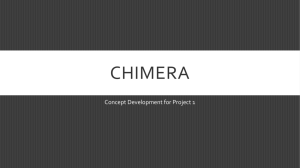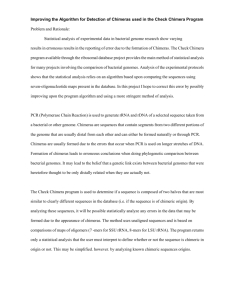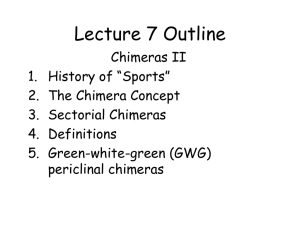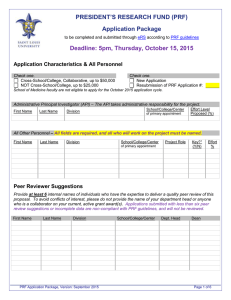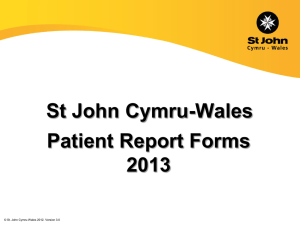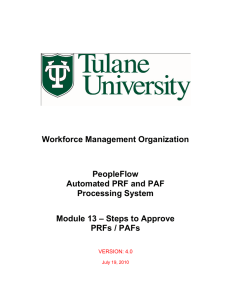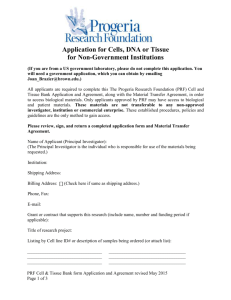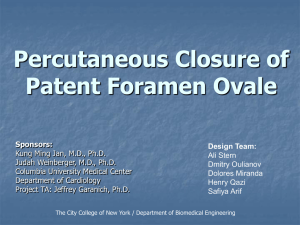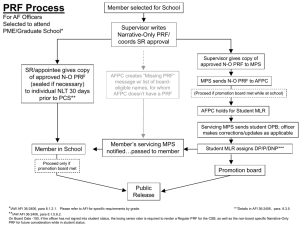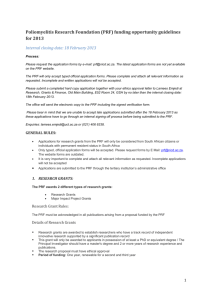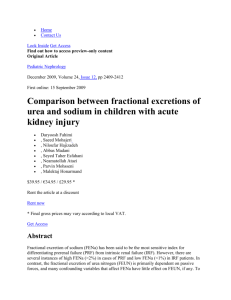Final Report - Armstrong Atlantic State University
advertisement
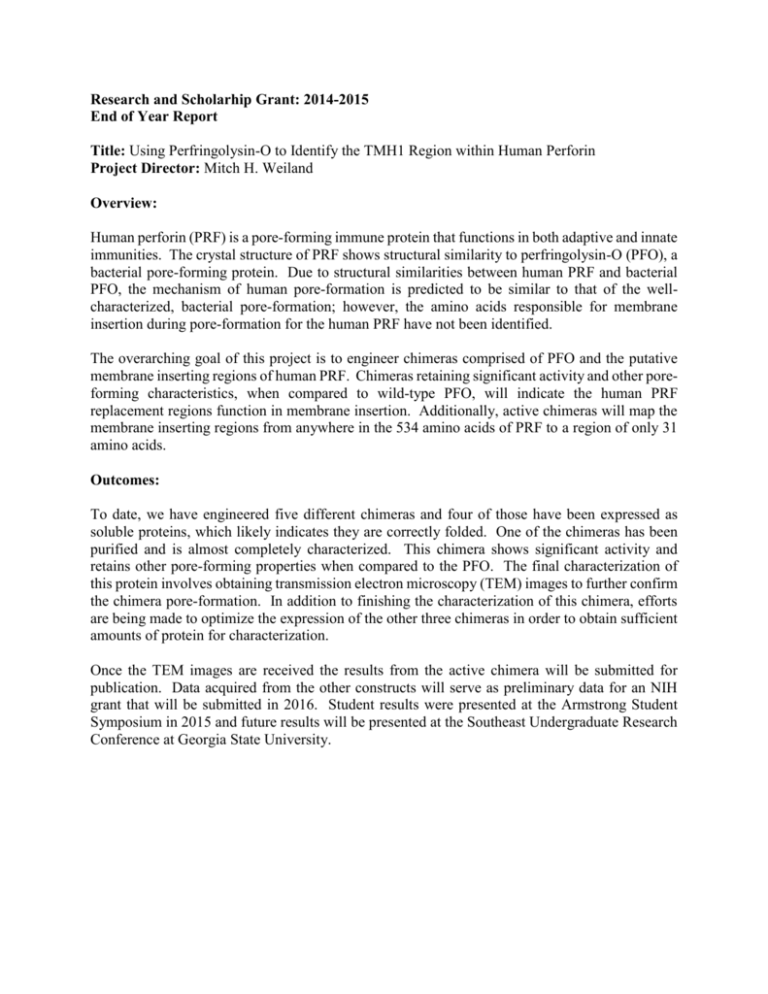
Research and Scholarhip Grant: 2014-2015 End of Year Report Title: Using Perfringolysin-O to Identify the TMH1 Region within Human Perforin Project Director: Mitch H. Weiland Overview: Human perforin (PRF) is a pore-forming immune protein that functions in both adaptive and innate immunities. The crystal structure of PRF shows structural similarity to perfringolysin-O (PFO), a bacterial pore-forming protein. Due to structural similarities between human PRF and bacterial PFO, the mechanism of human pore-formation is predicted to be similar to that of the wellcharacterized, bacterial pore-formation; however, the amino acids responsible for membrane insertion during pore-formation for the human PRF have not been identified. The overarching goal of this project is to engineer chimeras comprised of PFO and the putative membrane inserting regions of human PRF. Chimeras retaining significant activity and other poreforming characteristics, when compared to wild-type PFO, will indicate the human PRF replacement regions function in membrane insertion. Additionally, active chimeras will map the membrane inserting regions from anywhere in the 534 amino acids of PRF to a region of only 31 amino acids. Outcomes: To date, we have engineered five different chimeras and four of those have been expressed as soluble proteins, which likely indicates they are correctly folded. One of the chimeras has been purified and is almost completely characterized. This chimera shows significant activity and retains other pore-forming properties when compared to the PFO. The final characterization of this protein involves obtaining transmission electron microscopy (TEM) images to further confirm the chimera pore-formation. In addition to finishing the characterization of this chimera, efforts are being made to optimize the expression of the other three chimeras in order to obtain sufficient amounts of protein for characterization. Once the TEM images are received the results from the active chimera will be submitted for publication. Data acquired from the other constructs will serve as preliminary data for an NIH grant that will be submitted in 2016. Student results were presented at the Armstrong Student Symposium in 2015 and future results will be presented at the Southeast Undergraduate Research Conference at Georgia State University.
